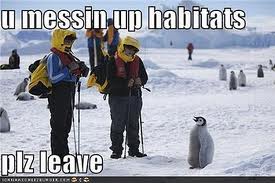 This week, we’re back in Britain.
This week, we’re back in Britain.
A sweet story.
We’re looking at otters, fascinating animals. We have them in Brazil too, I have often seen them during treks in the Pantanal. To me they are like a cat who likes water, playful.
Sad to see the tide turn against the otter
Although some claim the otter population is getting out of hand, I will always love them

European otters: three-month-old male and female cubs. Photograph: Nicole Duplaix/guardian.co.uk
I love otters. I recall my father’s excitement at seeing one glistening on a rock beside the sea on the west coast of Scotland in the summer of 1982. When I lived in a cottage beside the river Usk in my 30s, I used to rise before dawn in the hope of glimpsing the resident otter bitch teaching her pups to fish. Even now, I still get a thrill stumbling across a fish carcass, the debris of an otter’s dinner, rotting on a riverbank.
I was surprised to learn recently that otters are now so numerous our waterways cannot sustain them. At least, this is what Brian Dodson of Waen Wen Fishery in North Wales believes. His legal case made the news last week. Dodson claims the Environment Agency reintroduced otters to a nearby river without informing him and that the otters ate all the stocked fish in his ponds.
This is not an isolated incident: the impact of otter predation on the multimillion-pound inland fisheries business is a serious ecological issue across Britain. The call for an otter cull is increasing by day.
From the middle ages until the middle of the 20th century, the otter was akin to vermin, detested by fishermen and hunted with hounds, but it was the widespread use of the agricultural insecticide DDT that made extinction a real prospect 35 years ago. In 1978, the otter was added to the list of protected species and a PR makeover followed. Henry Williamson’s novel Tarka the Otter was made into a film in 1979, while the Otter Trust initiated a captive breeding programme. Since then, numbers have burgeoned.
(I have taken the liberty of replacing the Guardian video clip, because they never seem to ’embed’. If you want to see their clip, use The Guardian link below – AV)
Some would say we should have let nature takes its course, but that has not been an option for a long time. A very long time. Since about 4,000BC, man has effected the greatest changes in the “personality” of Britain and a perfectly functioning ecosystem is a thing of the distant past. We have felled forests, drained fens, dammed rivers and ploughed fields, modelling the landscape to our needs. We have introduced and eradicated the fauna to suit our desires.
Managing nature is, though, extremely hazardous. The red kite was hunted by gamekeepers down to a handful of breeding pairs in the rural fastness of mid-Wales by the early 1900s. Fast-forward a century and red kites are common again, following an effective conservation campaign. They have even become a motorway hazard: a cloud of red kites circling in a great vortex above the M40, like a scene from Hitchcock’s The Birds, is a common distraction to drivers.
My pet hate is the North American grey squirrel, introduced in 1876 to brighten up the parklands of Victorian gentlemen. We now spend a fortune annually trying to control grey squirrels.
The European beaver, the first native extinct mammal to be officially returned to the wild in Scotland, has recently caused huge controversy. The beaver is spreading south, where people are emphatic it will have to be shot.
In the complexity of our dominant relationship with nature, we have created a quagmire for ourselves. Thus, one generation’s vermin is another generation’s protected species, and vice versa.
I shall continue to treasure every rare encounter with an otter. I certainly won’t be laying any traps to snare otters along the Usk, but I appreciate that my son might.






















Posted by Alex Jones on January 27, 2013 at 10:09 am
This is going to be an increasingly difficult issue to address where conservation clashes with humanity. Many hours I shall spend over the coming years working out how this problem can be balanced out into a win-win situation for all.
LikeLike
Posted by argentumvulgaris on January 27, 2013 at 10:12 am
>Alex, an amicable solution would be difficult. I still say that man is the problem, not the animals. When animals become too numerous, they are subject to a cull. Man has become too numerous….
AV
LikeLike
Posted by livingsimplyfree on January 27, 2013 at 11:37 pm
I have to agree, this is a sensitive subject that can’t be solved until humans stop moving into the lands that nature and wildlife used. Here we have areas that worry about the deer population because of deer ticks, if they weren’t stranded in a small location because the town built up all around it they wouldn’t have a population problem in the first place, but we seem to think that we can move any where we like and just displace or rid ourselves of any wildlife we don’t want to live with. No traps will be used by me!
LikeLike
Posted by argentumvulgaris on January 28, 2013 at 8:05 am
>lsf, I think that most semi-rural areas have this type of problem, man encroaching on wild habitats.
AV
LikeLike